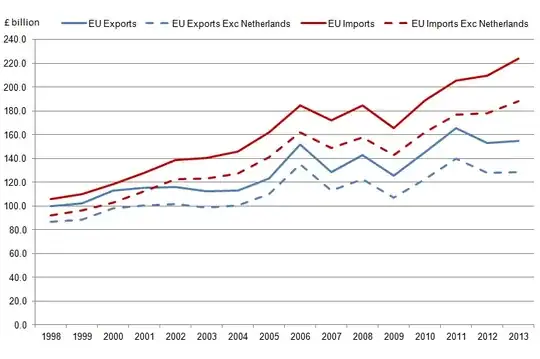This is sometimes called the "Rotterdam effect".
Sir Andrew Dilnot, Chair of the UK Statistics Authority, notes:
The term Rotterdam effect is used to describe the situation where
goods initially exported to one country are subsequently re-exported
to another country. Such an effect could be found at many ports. As
you note, the Rotterdam effect is difficult to quantify precisely and
any estimate must be based on a number of assumptions.
An ONS article
published in 2015 using data for 2013, estimated that at the top end,
the Rotterdam effect could be up to 50 per cent of goods exported to
the Netherlands, which would be around 2 percentage points of the
UK’s total exports of goods and services. Of course, there is
considerable uncertainty about any such estimate.
You can look at the data he cites here. This graph is especially relevant for the claim:

Even if we subtract all exports to the Netherlands from the exports (which we shouldn't), it is not true that a "very large portion" of exports should be excluded because of this.
It is of course true that the Rotterdam effect doesn't just exist with the Netherlands, but as the telegraph notes (citing the ONS):
It said: "The port of Rotterdam is not unique in acting as a
‘gateway’ for other countries; it is accurate to say that this form of
trading can occur in almost any place. For example, goods arriving in
France from China could, after clearing customs, be distributed to
other EU member states and potentially be recorded as imports from
France.
"The main difference is that the port of Rotterdam is one of the
largest in the world and the sheer quantity and value of goods being
traded separates the Rotterdam effect from other, similar, cases and
therefore attracts more attention," it added.
Finally, the ONS notes:
it is not possible to estimate, with any certainty, the impact that the Rotterdam effect has on UK trade with the Netherlands and its subsequent impact on UK trade with EU and non-EU countries
Still, I think the estimate of the Chair of the UK Statistics Authority should provide an answer to your question.
btw, this leaflet for staying in the EU puts the export percentage at 44%, using OSN data
